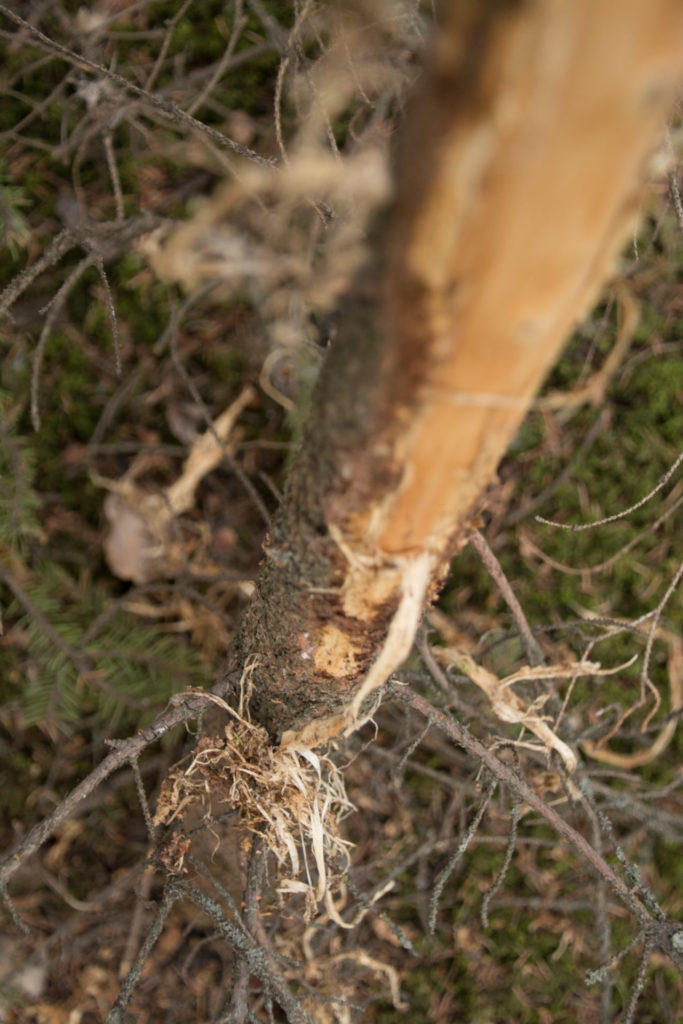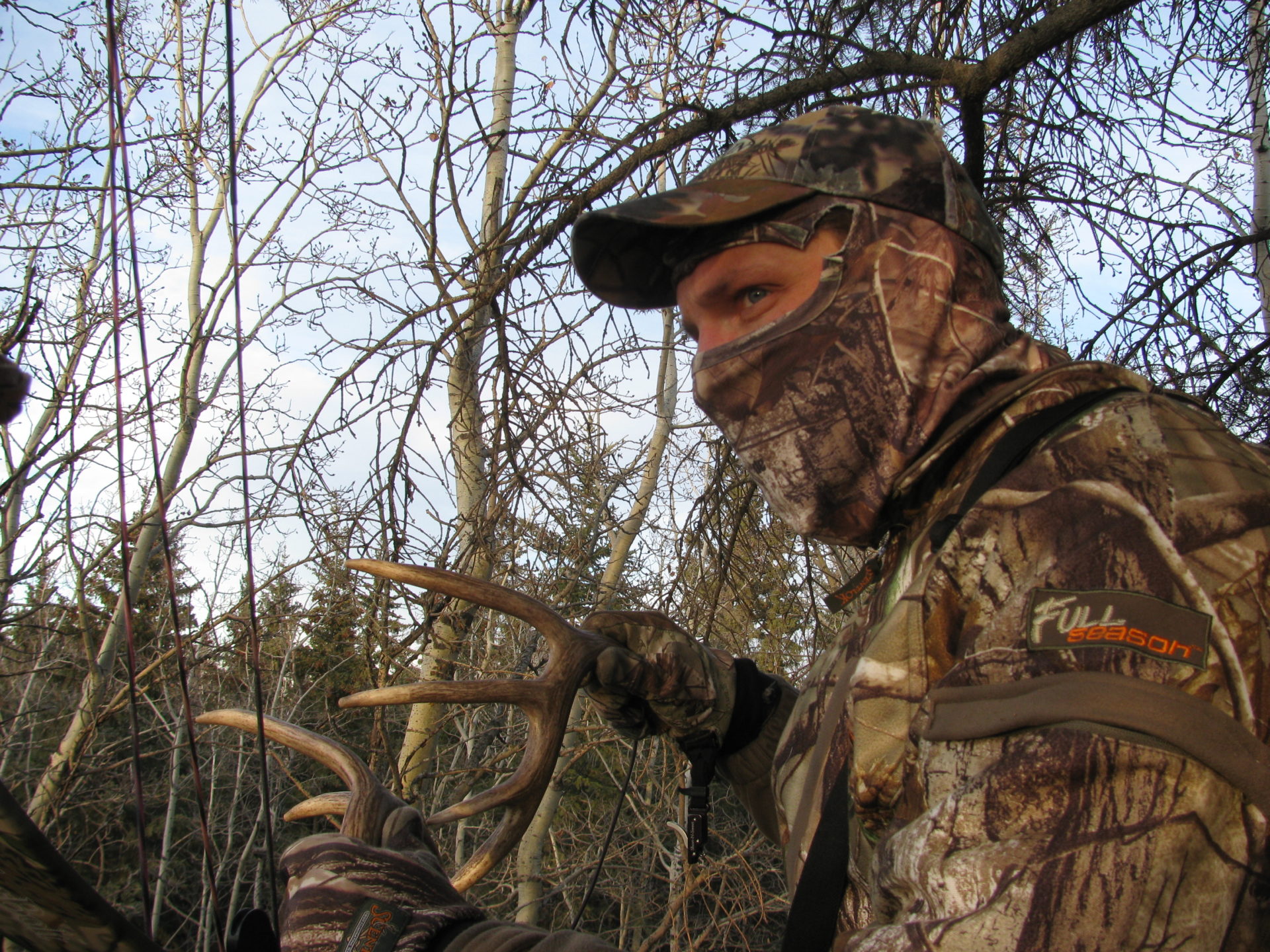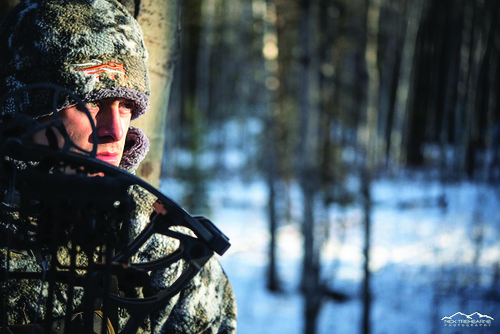Before the rut occurs in November, the first and final 15 minutes of legal shooting light is prime time for white-tailed deer movement towards feeding areas.
Advertisement
You do not need to be a wildlife biologist to know that whitetails prefer the safety of feeding in open crop fields under the cover of darkness. On the right night, you can catch them coming in early, but just before legal light ends. In order to capitalize during these critical 15 minutes at dawn and dusk, you want to have a good location, a solid strategy and proven equipment. These three pillars will ensure success in folding your tag.
It all begins with scouting. Finding food sources that deer are addicted to during the summer months is key to deciding on a location to hunt during the fall.
Advertisement
You want to check out the edges of the preferred feeding field for incoming and exiting trails. All edges eventually lead to another edge, and thus a corner, and that’s where I would spend most of my time investigating a good hunting site. Often, there are numerous game trails used for entering or exiting the field and it’ll be next to impossible to cover them all. Although it may be tempting to set up on these well-used trails and pick one or two of them, I would advise against it. Instead, follow the trails back into the bush and cover to find where they branch off a main trail. If you can find the intersection of two of these main trails, it doubles your chances and is a good spot to set up. Other times, the majority of trails funnel back in towards a pinch point. It might be ascending a steep bank or a path of least resistance through a thicket or a shallow river crossing. Those well-defined trails are a good spot to set up because of the density of deer using that part of the travel route.

Rubs and scrapes are all part of the rut and they begin in early October. If you happen to find a community scrape, the largest scrape in the area and visited by multiple deer to distribute scent, set up on it. If you stay put long enough at that scrape, you will eventually see every deer in the area. Rub lines are great when targeting a good buck. You can usually find them as they approach these feeding fields. Take note of the size of tree – the larger it is, the larger the buck making it is. A feeding area that has a good density of deer frequently feeding on it and a good understanding of deer movement in/out of the area is an essential first step to hunting success. Next is choosing a hunting strategy.
Advertisement
As with any strategy for hunting, your first consideration should be the wind. Ideally, you want a five kilometre-per-hour wind blowing away from your shooting lanes. If the wind is not right, do not bother hunting as you will do more damage by educating the deer about your presence. I always carry a wind indicator with me. It helps know exact wind directions and velocities on the ground and accounts for local objects not picked up by the closest weather station.
Still hunting is not that popular of a hunting strategy when it comes to whitetails. Most people prefer to let the deer do the moving and have the hunter stay still, and I would agree with this strategy just based on its historical success rates. However, staying put still means you need to get in and out of position in both the morning and the evening.
For morning hunts, enter your hunting spot away from the feeding field. You need to assume that the deer are in the field feeding and they will return to cover to bed down for the day. You want to find a way into your hunting spot nowhere near the feeding field. The reverse is true when hunting in the evening. You have to assume that the deer are bedded in cover and will begin entering the field as the sun goes down. I usually walk straight across or along the field and then take my own trail into my hunting spot. I try to avoid, at all costs, walking along deer trails when going in or out of my spot.
Try to avoid setting up on the edge of a field. Although the sign can be spectacular, you have to consider the ability to get in and out of the stand undetected. In the morning, you do not want to have to be near the field, so having a static spot set up there is not ideal. In the evening, it might be easy to get into this hunting spot, but if the deer manage to go around you and get into the field you will only be spooking them when you have to depart. They will eventually wise up and keep a safe buffer from your position. This is why I prefer to follow the trails away from the field, back into the bush, and set up there.
I prefer a straight ambush. Ambushing is a great technique that takes the animal by surprise. You already know that the deer are travelling to/from feeding areas during dusk and dawn, so there is no need to entice them. Once again, the setup you choose will inevitably determine how many shooting chances you are going to get. Pinch points, funnels and game trail intersections all increase your chances of seeing a deer using those travel routes. They will not necessarily use them every time, but the more you hunt, the better your chances are.

The above would be plan A – ambush. However, with any hunt, having a back-up plan is never a bad idea. I would be lying if I said I never go into the stand without my rattling antlers or deer calls. Often, I may see a deer that is not using the trail I am setup on, but he’s still within earshot. If that is the case during October, I will definitely rattle. The key to deer rattling in this situation is having a visual on the deer so that you can react to his demeanor. It is not to say you cannot rattle without seeing a deer, but you can make your rattling sequence that much more enticing and real while observing his reactions.
Using a tree stand is by far my favourite setup and piece of equipment that I use to hunt white-tailed deer. I never enter my tree without my harness. Ground blinds can also be an effective way to conceal yourself, but I always find that I can’t see enough around me, and I don’t like looking at one spot all the time. Most hunters use either a tree stand or ground blind, and the reason is pretty straightforward: when hunting whitetails, sit still and let them do the moving, as it’s the one who does the moving who usually makes the mistake. When you move through the bush, it’s easier for the deer to smell you and see you. But by staying put, you make it harder for them to detect you, considerably reducing the risk of getting busted.
You need to be ready when hunting whitetails during low-light. I have my bow in hand and I am ready to shoot. Things can happen quickly, and deer can suddenly appear. I do not want to risk having a deer see me either standing up or grabbing my bow. I am usually standing, leaning against the tree, arrow nocked, release clipped on and slowly scanning the bushes in all directions.
Getting to your ground blind or tree stand means walking along the forest floor. It’s essential to have a scent control regiment. You can start by taking a shower with an unscented soap bar before you head out hunting, attacking bacteria which is the root of all human scent. Keeping your clothes in a sealed container, away from contaminants, is another easy method to lower your scent footprint. You can never be 100 per cent scent-proof, no matter which products you buy, so always keep the wind in mind and stay away from less-than-ideal situations. Boots require special consideration, since they are the ones touching the ground. I use scent-elimination spray well before I enter the field. Try not to spray it on just before you walk in, as moisture increases the ability for deer to smell you.
Bowhunting at low light can I have its fair share of challenges. Make sure you practice with all your hunting gear on during these low-light situations. It can get cool in the wee hours of the morning or late at night and you will need to layer up to stay warm until the end of shooting light. If you use a peep sight, you may want to consider one with a larger diametre in order to see your pins during those crucial minutes of hunting. I personally do not use a peep because no matter what size diametre you have, it limits the amount of light available for your eyes to focus on your pins, with the possible chance of you not being able to see your pins in dark forests during legal shooting time. The same applies for rifles, but most scopes nowadays have light-gathering capabilities, which allow you to shoot with no issues during any legal time.
Last but not least, you will need a flashlight or headlamp. You are going to have to get in/out of your position in darkness. That is what it takes to be set up to hunt whitetails in low light.
Hunting whitetails in the early morning or late evening is a very peaceful time. Usually the wind has not picked up yet in the morning or the wind dies off as the sun sets over the trees in the evening. I love that feeling of being in your stand, ready to hunt, waiting for legal light and hearing (but not seeing) activity close by. For morning hunts, I have been waiting in my tree stand 15 minutes before legal light, and in the evening I usually get into my stand two to three hours before last light, but when the sun sets I know it is time to get serious – a slow evening can quickly change in low light.
